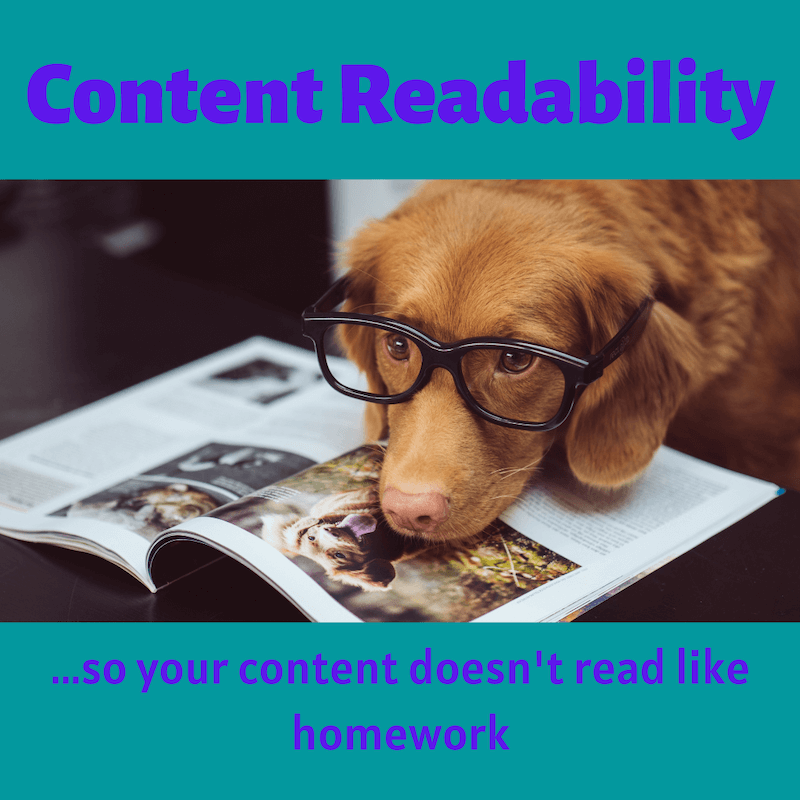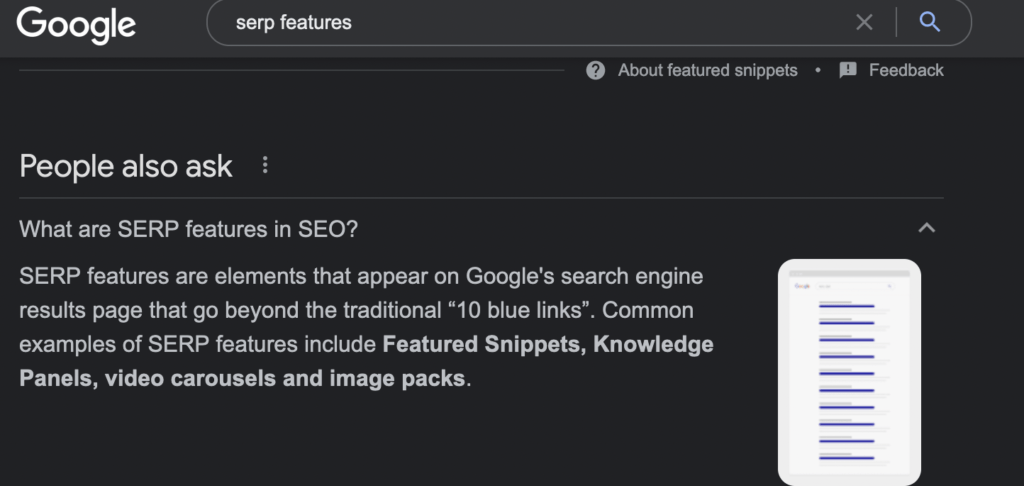
When you finished your last class in your last year of school, you probably expected to leave homework behind forever. A person who becomes a professional writer may be the exact kind of nerd to miss school and homework in adulthood (it’s OK, this blog is pro-nerd). But the people you’re writing for likely don’t feel that way—plenty of people were thrilled to leave that particular aspect of life behind.
When they read content today—whether for work, education, or entertainment—they don’t want flashbacks to high school. They want the content they read to provide the information they seek without making them work too hard for it. Part of the job of a good content marketing writer is to help people learn in ways that feel effortless, or at least easy. Bonus points if you can make a piece on a dry or technical subject entertaining.
Doing that is hard and requires skill, but there are a few relatively easy techniques you can employ to make your content more readable.
What is Readability?
Readability is the term used to describe how easy a piece of writing is to read. A text that’s “readable” is one that the typical reader doesn’t have to exert all that much effort to understand. If someone has to look up words, or take time to sit and think about a sentence before it makes sense to them, then it’s not very readable. People sometimes talk about readability in terms of grade level (e.g. “7th-grade reading level” to describe something the typical 7th grader could easily understand).
Why Readability Matters*
Before we get into how to write content that’s readable, let’s take a minute to consider the why. Your audience is smart, right? Do you really need to make reading your content easier on them?
Well, yes. Readability isn’t about the intelligence of your audience, it’s about creating an experience that’s genuinely helpful to your readers. And for writers, striving to create readable content offers some key benefits.
If readers consider your content a slog to get through, they can just click away.
Chances are, the content you write isn’t being assigned to your readers. No one’s going to get a grade on reading comprehension for that blog post or ebook you wrote. They have to actively choose to click on it, then continue to choose to read it to the end. If the experience of reading your writing is too much work, a lot of readers simply won’t bother.
And why would they? People have a lot of content options and long to-do lists. It’s common for people to be interested enough in a topic to consider checking it out, but decide they’re not actually interested enough to read the whole thing. Analysis from Chartbeat a few years back found that 33% of people spend less than 15 seconds reading the articles they open. For native advertising, only 24% scroll down the page—which suggests that anyone making marketing content will have a harder job keeping reader attention than those writing unbranded content.
Making sure your content is easy to read is an important component in getting readers to stick around long enough to see your ideas through to the end.
Readable content is easier to understand, thus more valuable.
You’re writing for your audience, not your own ego. Sounding smart won’t earn you any points, but creating content that your readers find genuinely valuable will (OK, maybe not literally—I don’t know of anyone awarding content marketers “points,” but you get the idea). For your content to be successful on the most basic level, it has to provide value to the people you’re writing for.
If someone in your target audience struggles to understand what you’re saying, then your writing isn’t doing its main job. You may assume your audience has a similar base level of knowledge on the topic to you, but that’s not always true. And that assumption can lead you to create content readers find confusing.
7 Ways to Improve Content Readability
Writing content that’s easy to read takes skill. Each one of these tips can make a big difference in how readable your content is.
1. Keep it casual.
There’s absolutely a place for writing that takes some real mental work to read. If I decide to pick up a novel by Virginia Woolf or a book of academic essays analyzing a topic I’m interested in, I know my brain had better be ready for some work. And I like doing that kind of mental work—in the right context.
But when I want to learn something useful to my job or my life, I’m not in that same headspace. I don’t want to ponder complex themes, I want to learn the information I’m looking for in a straightforward way. Most content marketing belongs in this category. The writing doesn’t need to be showy or formal. Your readers will be better served by a tone that’s conversational and straightforward.
And depending on the brand and audience you’re writing for, injecting some personality into your writing can pay off. Adding a relevant pop culture reference (but nothing too obscure—it should be something you’re confident readers will recognize), a (tasteful) joke, or emojis and gifs can make the content more relatable.
2. Write out all acronyms the first time you use them.
Most of the people who find their way to my blog likely work in online marketing, or have jobs related to marketing. That means a notable majority already do a lot of thinking, talking, and reading about SEO (search engine optimization). Yet every time I mention it in a post for the first time, I write out what the acronym means.
Even if 99% of my readers know what an acronym means, that 1% matters too. And I’ve been in that 1% myself when researching new industries for clients. I can tell you from experience that those acronyms that get tossed around in your industry every day are not familiar to everyone who comes across your content. Even worse, a lot of acronyms get reused in different ways depending on the context, so Google doesn’t always turn up the meaning you’re looking for.
As one example, SME could mean:
- Small and medium-sized enterprise (probably the most common usage)
- Subject-matter expert (the most common way it comes up in my work)
- Society of Manufacturing Engineers (top result in Google)
- Society for Mining, Metallurgy, and Exploration (2nd result in Google)
- One of the other 89 results listed in the Free Dictionary
A savvy reader would probably be able to figure out which of those results you mean based on the context, but it could take them some real work to get there. Good writing doesn’t make readers work that hard to understand what it’s saying.
Oh, and then there’s always the issue of acronyms that evolve to have popular meanings you may not want to be associated with.
You can skip the confusion (and risk of accidental sexual meanings) by writing out the meaning of every acronym you use the first time you mention it in each piece.
3. Explain industry-specific concepts.
As with acronyms, the more familiar you get with the concepts commonly discussed in a particular industry, the easier it is to forget that not all your readers share your familiarity. Having a simple explainer section or paragraph in your piece that defines the meaning of industry-specific terms and concepts can go a long way to ensuring all your readers are able to follow what you’re saying.
Even if you think the concept is pretty obvious and almost all of your readers already know all about it—remember that if 1% is confused, that’s too many confused readers. If you’re worried that explaining a concept will bog down a piece and distract from the main points you’re making, you can link to another piece that does the explaining for you. The important part is to make it easy for readers to figure out what a term means so the rest of the content makes sense to them.
As a bonus, sometimes those explainer sections can be good for SEO. It could help you snag a SERP feature like an answer box or one of the People Also Ask answers.

4. As much as possible, replace long words with simpler words.
Most people who become professional writers have a big vocabulary. When you use words all day long, you get to know a lot of them. But in content marketing, showing off your extensive (voluminous, copious, profuse, etc.) vocabulary usually doesn’t do your readers any favors. There’s a reason I just went with “big” in that first sentence (before showing off my ability to use a thesaurus in the next.)
Simpler words ensure more of your audience can understand what you’re saying without having to think too hard about what individual words mean or pull up dictionary.com. There are times when a longer word is the best choice—either because it adds nuance a simpler word doesn’t contain, or keeps you from using the same word over and over again in a text. But usually, keeping it simple improves readability and makes for better writing.
5. Make use of subheadings and lists.
Imagine encountering an article where all of the writing was in one big text block. Even before you start reading, it feels more overwhelming and dense than something that has more white space and clearly marked sections. You don’t want your reader to be overwhelmed before they even start.
When information is divided into chunks, reading it feels more manageable to the average reader. Sections that are thoughtfully divided and labeled make a piece easier to follow. If a reader’s in a hurry or looking for a specific piece of information, they can skim to more easily find what they need. If they’re reading the whole piece, it gives them space to take a break between sections and know what to expect as they move onto each new one.
And as a nice bonus, they help us as writers apply more thoughtful organization to our pieces, which can make the writing process easier.
6. Use long sentences sparingly.
Now and then a long sentence is the best way to say something. But a lot of the time, it makes it harder for the reader to process what they’re reading. If they can’t remember how a sentence started by the time they get to the end, parsing its meaning requires more complex thinking and could mean having to go back to re-read it a couple of times.
Anytime you realize a sentence has gotten a bit unwieldy, look for a way to break it into two or more sentences. One trick that makes this easier is to throw out an old rule from your grammar school lessons and get comfortable starting sentences with “and” and “but.” For people writing academic papers, the rules may be different. But for those of us writing for the web, if starting a sentence with “and” improves readability (and it often does), that’s more important than any old grammar rule.
7. Proofread out loud.
When you’re the one writing something, obviously your sentences will make perfect sense to you. They came from your head! But sometimes sentences and phrases that sound perfectly fine in the writer’s own head don’t work as well when someone else tries to read them.
The best way to get out of your own head to see how your sentences sound to others is to read your writing out loud. My personal rule is to proofread everything I write at least twice, once out loud. I also recommend waiting until the day after you wrote it to do the proofreading, so you can get a little distance from the writing process.
Everyone—I mean it, everyone—makes mistakes in their first draft. Sometimes it’s basic typos or something embarrassing like the wrong there/their/they’re, and sometimes it’s sentences that are awkwardly worded in a way you won’t catch until you get out of your own head. When you get into the practice of proofreading everything twice, you’ll realize just how many of those errors you make by how many you manage to catch before the piece goes out.
Conclusion
Most of us in content marketing aren’t writing about topics our audience will find exciting, but that doesn’t mean reading your content has to feel tedious. By making your content more readable, you can ensure your audience gets the information they need without it feeling too much like homework.
*In my rough outline of this piece, I included a subsection here on how readability is good for SEO—right up until I went searching for data to support that point and learned that, whoops, content readability appears not to impact SEO.
I’m including this anecdote here as a good reminder to always go looking for evidence to support your assumptions, so you don’t embarrass yourself by making claims that have been disproven.
